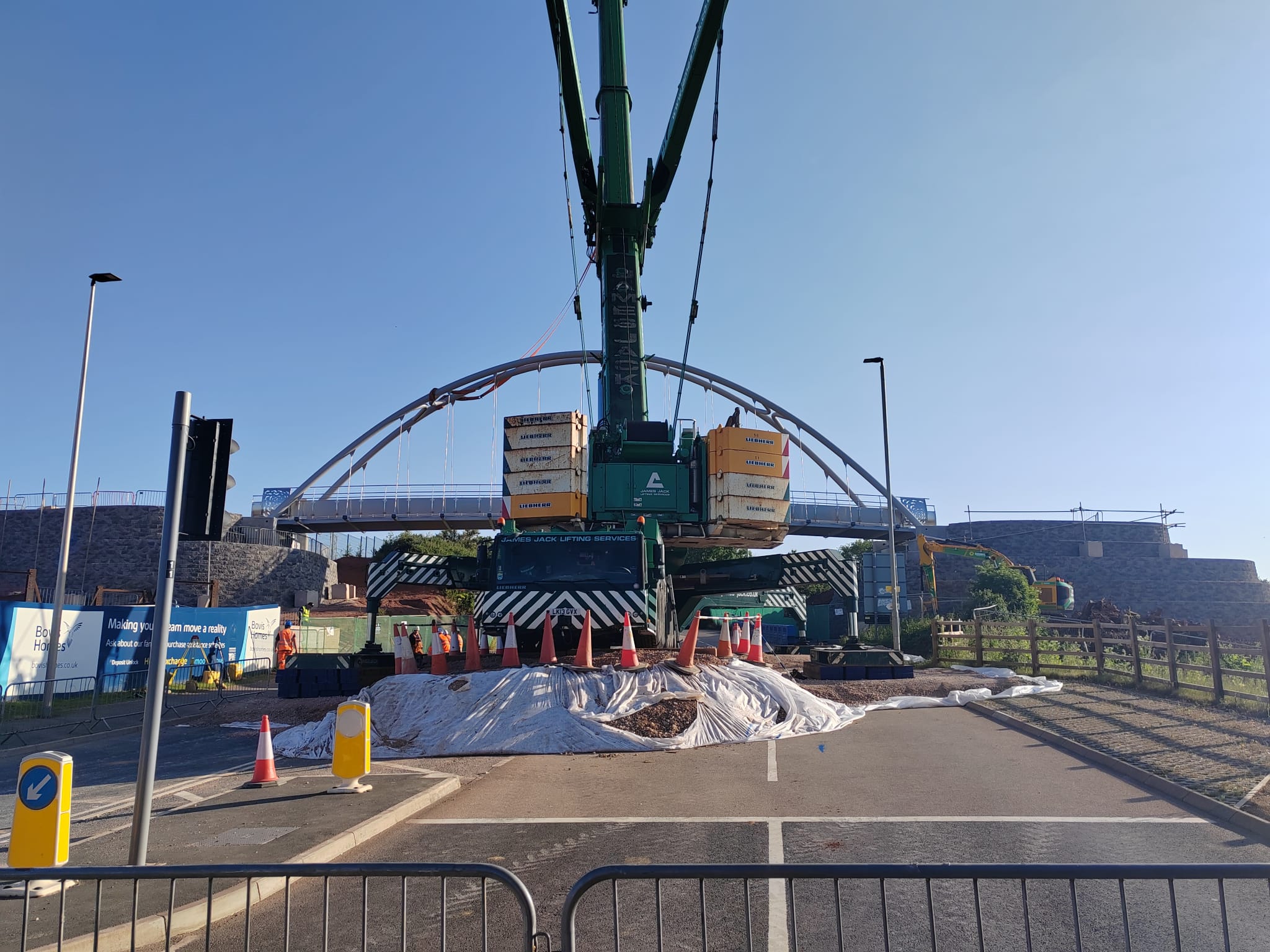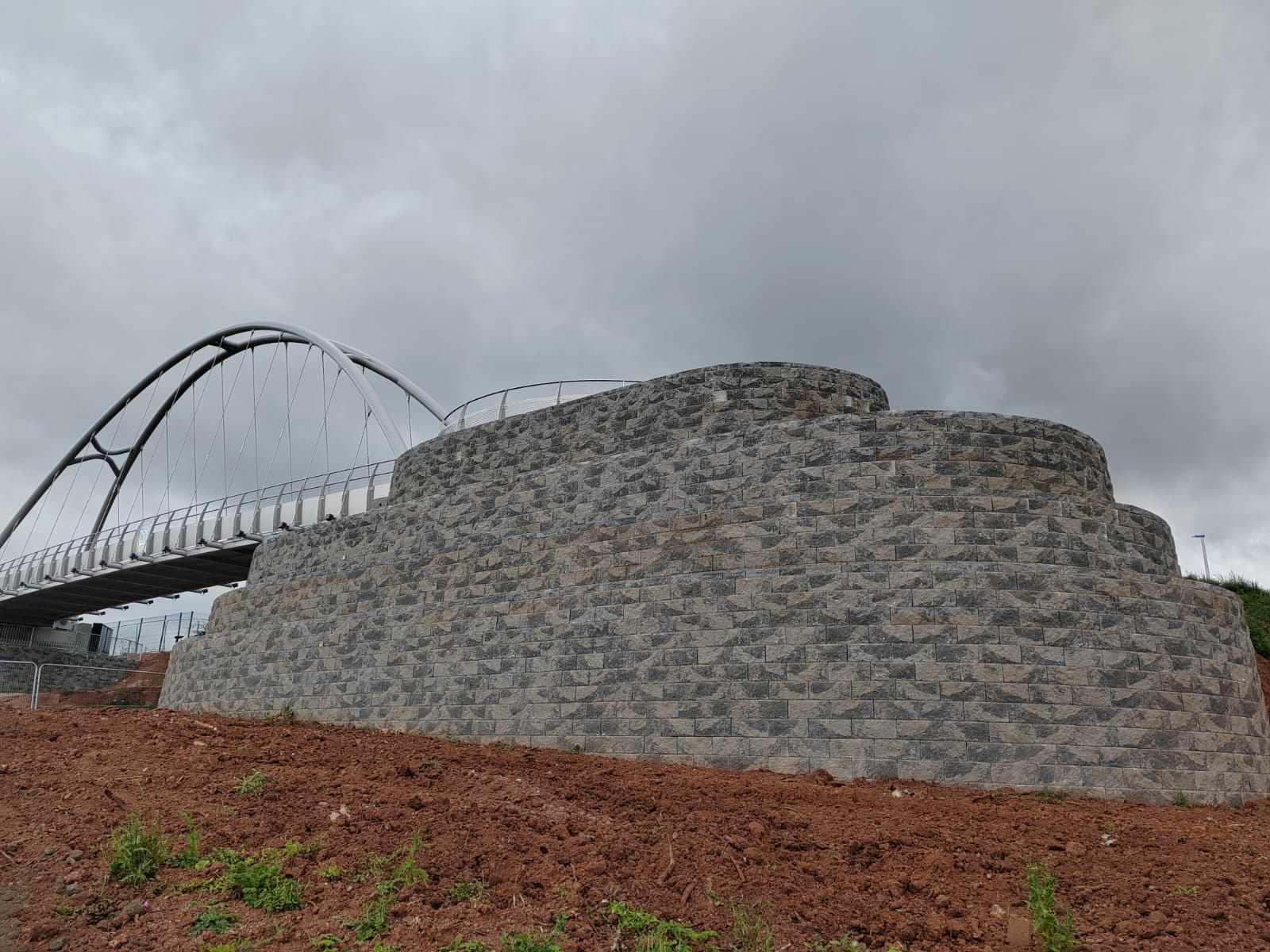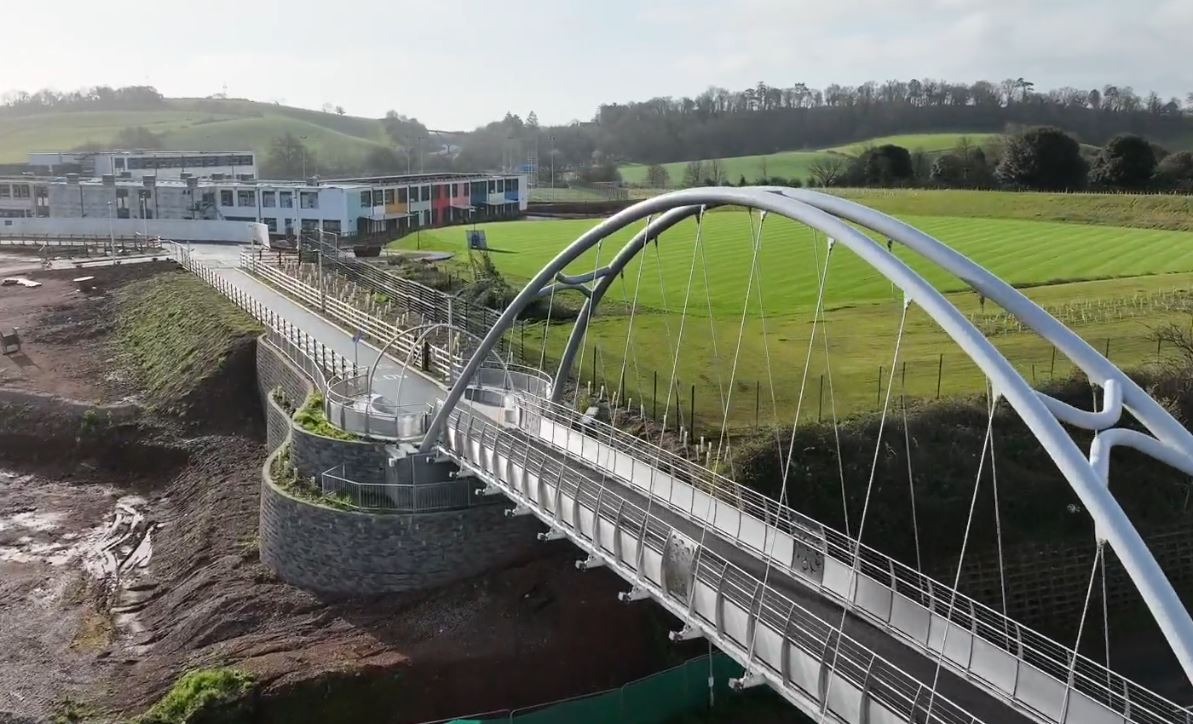
SRW, A379 Exeter, Devon, UK
Graham Group requested that Tailor Engineering work alongside overall scheme designers Buro Happold, to carry out a specialist element design for segmental block reinforced soil wall bridge abutments, and associated wingwalls, as part of the permanent works for a new pedestrian and cycle bridge over the A379, Exeter, Devon. The new bridge provides a dedicated crossing of the A379, and was required to allow ease of access to a new school, and to newly provided housing and community facilities. The abutments and wingwalls are constructed using 4-degree segmental retaining blocks (SRW) combined with tested ASTM D6638 geogrids.
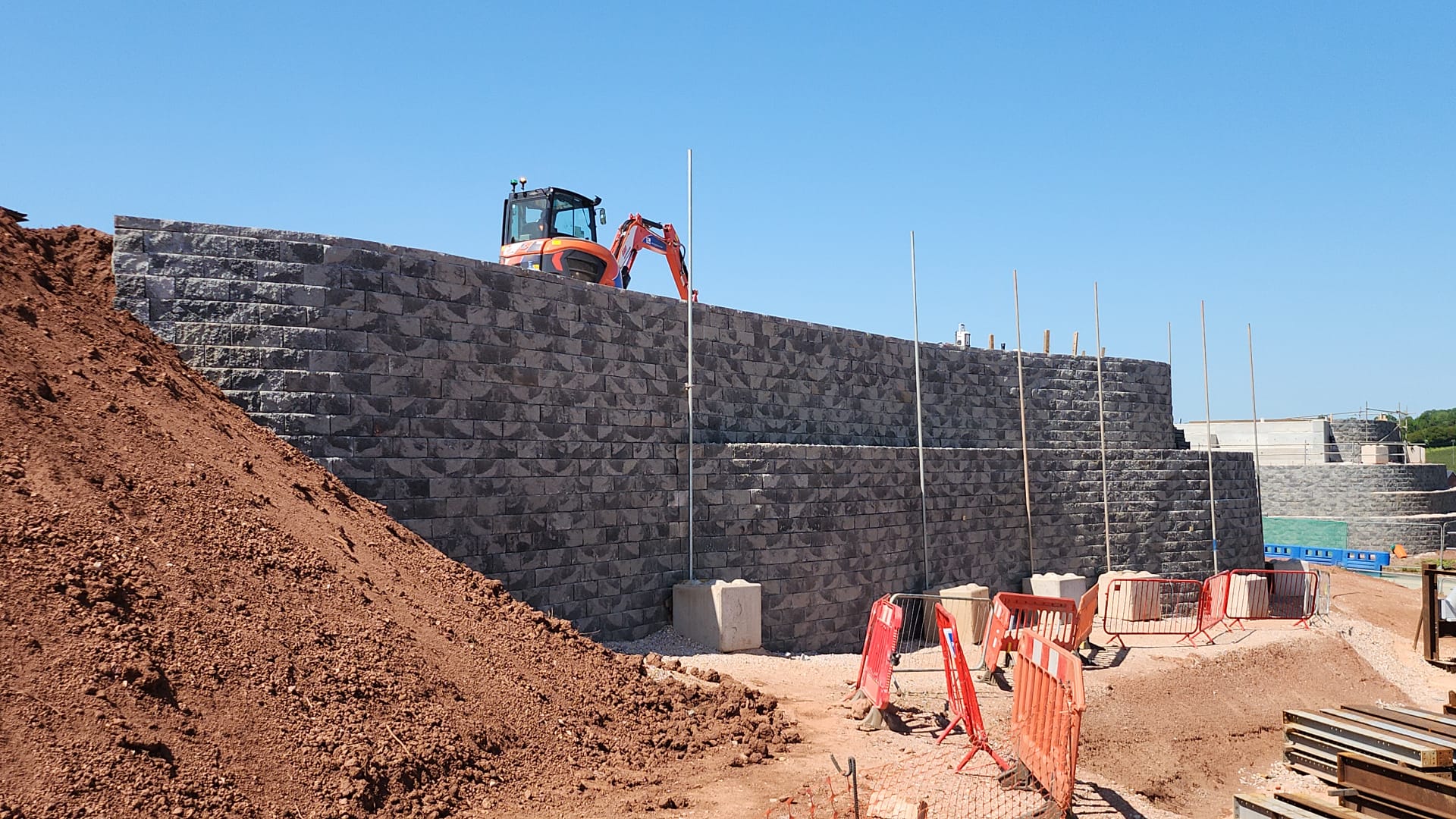
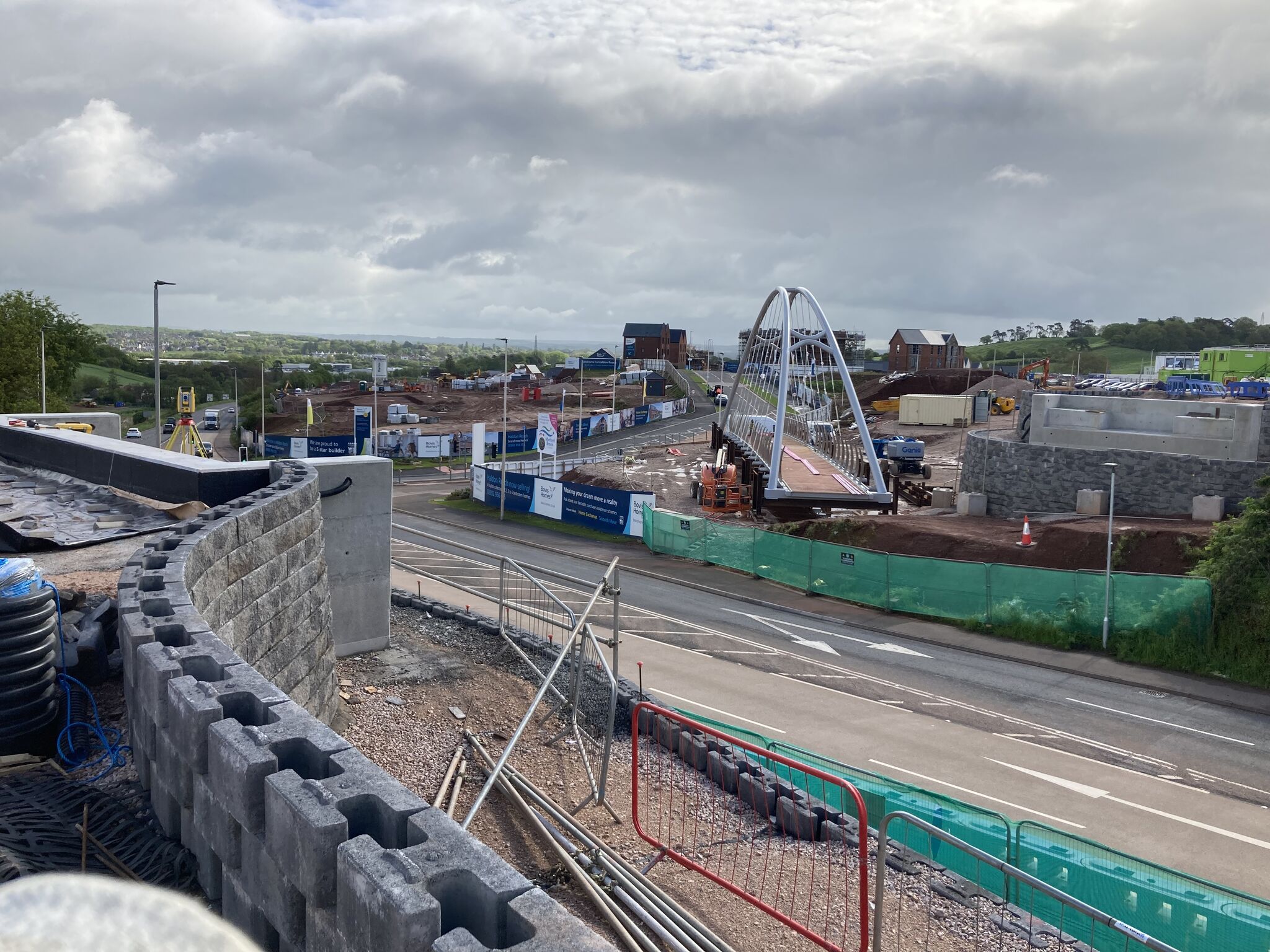
The SRWs are directly supporting both ends of a pedestrian and cycle way bridge, which spans 36m over the carriageway. The SRW abutments vary between approximately 2m, and 6m in height. Within the design we also had to consider that the South abutment structure has three tiers (all of different heights), and the North abutment is located on top of a 1:2 slope. The SRW wingwalls are to the side of the abutments. These tiered wingwalls vary up to 7.4m in height. The SRW abutment walls have been designed to directly support the bridge beams, with the reinforced soil structure acting as direct bridge abutment. The approach followed by Tailor Engineering took inspiration from the American GRS-IBS concept, as well as the RRR Japanese approach. Instead of using low strength geogrids for the wing walls, Tailor Engineering designed the walls with high strength strap-based geosynthetic reinforcement, thus distributing the bridge loads throughout the structure. The bridge deck was craned into place during a full carriageway closure, during which the walls were monitored by Devon County Council’s Engineering Department, who confirmed there was no movement of the structures following being loaded by the bridge deck.
